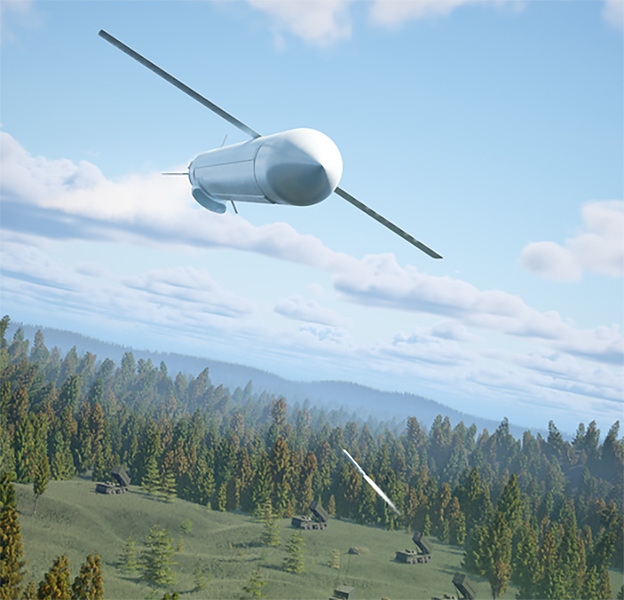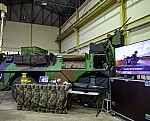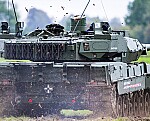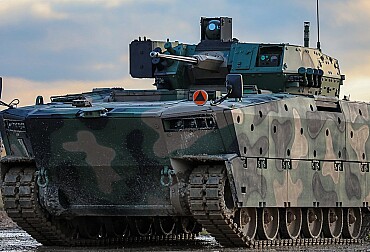German, France and Poland to develop a very long-range ground-to-ground strike capability
The Weimar Triangle summit has taken place in Paris. The national defence ministers of Germany, France and Poland took part. During the meeting a developement of a very long-range ground-to-ground strike capability was also one of the topics.
A meeting of defence ministers of the Weimar Triangle countries (Germany, France and Poland) was held in Paris on June 24. During the meeting, Polish Defence Minister Władysław Kosiniak-Kamysz, French Minister for the Armed Forces Sébastien Lecornu and German Defence Minister Boris Pistorius discussed, among other things, the security situation in Europe more than two years after the Russian attack on Ukraine and the related threat to the rest of Europe, cooperation within the international organisations of the North Atlantic Alliance and the Weimar Triangle.

The Polish Deputy Prime Minister said: "We are in favour of increasing aid to Ukraine. This includes the training of Ukrainian soldiers on the territory of our countries. We consistently support Ukraine militarily and humanitarian and this will not change, but we are constantly working to change the effectiveness of these actions." Shortly after the talks, the Ministry of Defence gave the main objectives for the coming months: 1) organising joint Weimar Triangle exercises in Poland in 2025, 2) extension of the mobility initiative to France, 3) further support for Ukraine. During the meeting a developement of a very long-range ground-to-ground strike capability was also one of the topics.
Anything that can strengthen deterrence is a good thing, suggested Sébastien Lecornu when he mentioned the development of such capability. Already at the end of May, during French President Macron's state visit to Germany, there had been talk of general and inclusive long-term cooperation in the field of long-range strikes, with no specific details communicated by than. After the meeting of defence ministers of the Weimar Triangle, Sébastian Lecornu said at a press conference: "For the French, the question of long-range or very long-range strikes is always a bit of a taboo because, in fact, we are not allowed to talk about conventional deterrence when we are an endowed power. But finally, I broke this taboo several months ago when I said: even an armed power needs to back up its nuclear deterrent with a conventional deterrent system, or in any case with substantial conventional forces. So here too, discussions are under way. Poland is interested."
At the forthcoming Nato summit (to be held in Washington from July 9 to 11), the three countries are expected to sign a letter of intent to lay the foundations for future cooperation in this area. Lecornu set the first milestone by pointing out that France already has capabilities and technological building blocks, with in particular the MdCN or NMC (Missile de Croisière Naval, Naval Cruise Missile), a land-based version of which was presented by MBDA at the Eurosatory 2024 arms fair. The original MdCN-NCM is vertically launched from France’s FREMM frigates using the compact A70 SYLVER vertical launcher which is also capable of housing other MBDA missiles such as the ASTER family of air defence missiles.
Its land variant is called LCM (Land Cruise Missile). Eric Béranger, CEO of MBDA, said: "The Land Cruise Missile system complements MBDA’s comprehensive portfolio of decisive European sovereign solutions. Building on the track-record of the Naval Cruise Missile, MBDA demonstrates its ability to cover the full spectrum of operational requirements for our customers while generating synergies across our deep strike portfolio to ensure battle-readiness."
The LCM system is to offer the same unique capabilities as the NCM, including metric precision at very long range; high survivability when penetrating through enemy integrated air defence systems thanks to reduced radar cross section and terrain-following capability; and high lethality against targets. It will also allow highly accurate synchronized time-on-target (STOT) capability as already demonstrated by the simultaneous NCM strike from a frigate and a submersed submarine, performed by the French Navy with the support of DGA in April 2024. According to MBDA, the LCM brings the capability to inflect aggressive behaviours from peer adversaries by imposing a permanent and immediate threat against enemy high value assets.
The LCM is in fact the only sovereign European solution for a cruise missile system fired from a land platform, designed, produced and assembled in Europe. The MdCN-NMC has a range of around 1,000 km. The LCM is one of the solutions proposed by MBDA for the Long Range Land Strike programme, for which Thales and ArianeGroup are also in the running.
The French Defence Procurement Agency (DGA) announced in October 2023 that it would be launching an innovation partnership for the future deep strike capability. In detail, such a procedure takes place in three stages: research and development contracts are first notified to interested manufacturers. The solutions deemed least promising are then eliminated, while those selected are put out to tender again. The most effective solution will be ordered. The ambition of this programme goes beyond the simple replacement of the LRU (M 270 MLRS), since it aims to give the French Army the capacity to strike a target located 120–150 km away, or even 500 km and more.
Safran has teamed up with MBDA on a concept based on a ground-to-ground version of the Modular Air-to-Ground Weapon (A2SM, also known as the Hammer). This team has been joined by ArianeGroup and Thales. Thales will be responsible for designing the command and control elements as well as the guidance and navigation system for the ammunition, which will be developed by ArianeGroup. The French Army wants to get at least 13 long-range strike systems by 2030 with 13 more to follow.
On June 21, the German Ministry of Defence submitted a proposal to the Bundestag for the release of €600 million for the development of the Tyrfing 3SM (Super Sonic Strike Missile) missile, which could have a range of up to 1,000 km. Led jointly by MBDA Deutschland and Norway's Kongsberg, this programme is not expected to be completed before 2035. For the Bundeswehr's future long-range indirect fire system, MBDA Deutschland is also developing the Joint Fire Support Missile (JFS-M), a cruise missile with a range of at least 300 km that could be compatible with the M142 HIMARS and EuroPULS systems.








